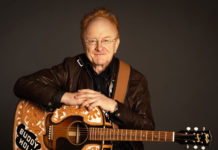I think I’m on a roll here. I have been addressing what I have recently seen in the community that seems hostile and deserves more delving into; social media has been playing a big role in all of this. I think we need a better understanding of how to use the wide open frontier of the digital world—how to access and assess the sentiments of communities whether it be on the local or national level.
During the last year or so I have seen so much more mention of social media in the public discussion of our community. There are forums and Facebook pages and all kinds of places to go get information, find kindred spirits, and express yourself.
Along these lines, a speaker at this year’s State of the Valley Address spoke about how we are not using social media to its fullest potential. The means is out there to create an environment where an open and flowing dialogue can take place with relevant information and sentiment being shared in an almost instantaneous manner.
Unfortunately, I feel that almost every time I see a meaningful dialogue beginning to happen in social media there is someone with a strong emotional bias that wants to monopolize the conversation.
On so many occasions I have seen someone who feels negatively about an issue dominate a conversation, often ignoring facts. In one example earlier this year, 24 out of approximately 50 posts on a subject regarding the downtown were by the same two people.
I think we need to figure out how to truly understand what we are seeing in social media for it to become reliably relevant in any decision making process.
We need to be cognizant of the effect of something called “negativity bias” which makes it much easier to mobilize someone angry about an issue than it is to get someone content or supportive of an idea to do something about it. This is the strength of many in the community who disagree with what the City Council, School Board, or even a local Homeowners Association might be doing that involves change or a perceived limitation of rights. They have the power to mobilize many based upon one of our strongest emotions—anger.
We should be aware that the apparent majority showing up in social media can be the result of well orchestrated planning and the use of electronic messaging. On one issue, I heard both sides complain about this.
We should realize that most of the 40,000 plus residents of our community don’t get involved because things are just fine with them. It’s hard to mobilize a group of people who are happy with the way things are.
The potential to marginalize what we can glean from social media is tempting, but instead let’s develop a better understanding of how to use it and truly interpret what we are seeing. There is so much good feedback out there that we should be using it, we just need to understand what it really means.
And maybe if we all act civil we won’t need to do so much interpretation.
John McKay is a Morgan Hill resident, city planning commissioner and co-founder of the Morgan Hill Tourism Alliance.








